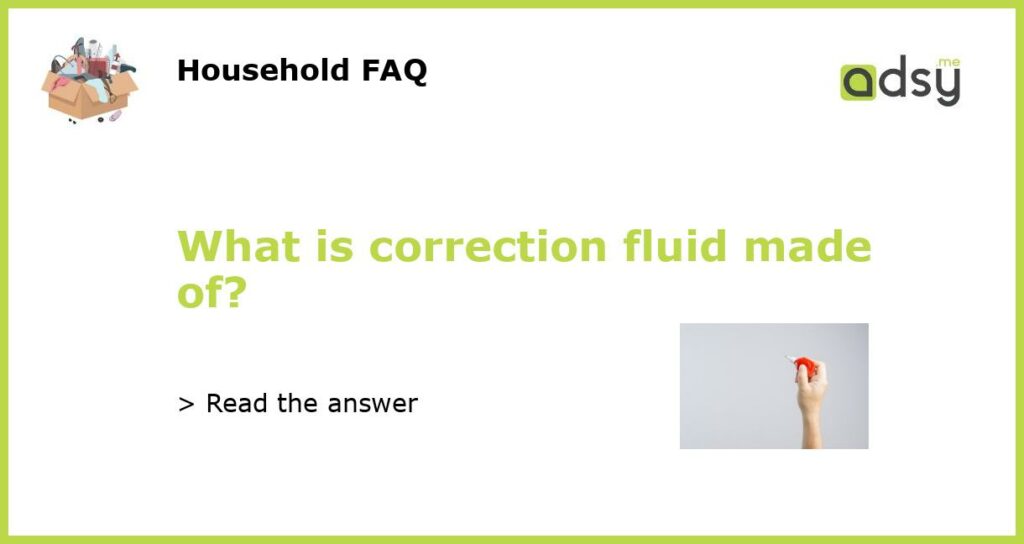What is Correction Fluid?
Correction fluid is a popular tool that is used to conceal handwritten mistakes. It is sometimes called “white-out” or simply “correction tape.” A wide variety of correction fluids are available in different colors, bottle sizes, and application methods. Correction fluid is basically a type of liquid that is applied to a mistake in order to cover it up and create a smooth, clean writing surface. But what exactly is this fluid made of?
The Composition of Correction Fluid
Correction fluid is made up of several key ingredients. The most important ingredient is titanium dioxide, which is a white pigment that is used to give the fluid its opaque, white color. Other ingredients can include solvents, resins, and other chemicals that help the fluid dry quickly and adhere to paper. The exact composition of correction fluid can vary depending on the brand and type of fluid, but most formulas contain similar core components.
The History of Correction Fluid
The first correction fluid was invented in the 1950s by the Bette Nesmith Graham, a typist who was frustrated with the constant need to retype documents due to mistakes. She created a fluid made from white paint and water that she could use to cover her typing errors. After she became a successful entrepreneur, she began selling her correction fluid under the name “Mistake Out.” Her product was eventually bought by Liquid Paper, which is now a leading brand of correction fluid. Other companies have since developed their own correction fluid formulas, but the basic concept of covering up mistakes remains the same.
Alternatives to Correction Fluid
While correction fluid is a popular tool for writers, it is not always the best option. In some situations, correction tape or erasers may be preferable to cover up mistakes. Correction tape is a dry adhesive strip that can be applied over a mistake and written over again immediately. Erasers, on the other hand, are useful for removing mistakes but can create smudges and leave paper fibers behind. Depending on the severity and type of mistake, different correction tools may be more effective.
The Future of Correction Fluid
In recent years, technology has made it possible to make corrections digitally instead of on paper. Many word processing programs and applications have built-in spelling and grammar tools that can catch and correct mistakes in real-time. As digital communication becomes increasingly prevalent, it is likely that fewer people will rely on physical correction tools like fluid or tape. However, for now, correction fluid remains a useful and convenient tool for people who need to make paper edits.






![Snopake 13139 Hi-Tech Correction Fluid,white, 20 ml Bottle [Pack of 10]](https://m.media-amazon.com/images/I/41JfelYRftL.jpg)